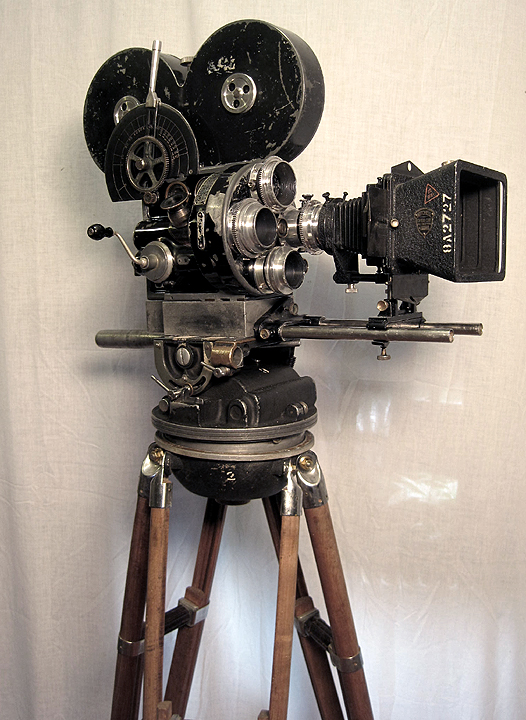
\
Thomas Ince’s Bell and Howell 2709, # 241
Originally Purchased By Thomas Ince Studios February 23, 1918

This is the camera that started what is known today as Culver City Studios. There will be several pictures of the camera and a five-minute video at the end of this text. Enjoy.
I actually couldn’t wait to sit down and write about Thomas Ince and this camera, a Bell and Howell 2709, number 241. I have had many, many 2709’s, including William Fox’s camera that started Fox Studios; the camera that was the main prop in Peter Jackson’s “King Kong”; Henry Ford’s personal 2709; and the 2709 that started MGM. All these cameras now reside with some of the world’s most wealthy and powerful people. I am really proud to have been the caretaker of those fine cameras. Now I’m astounded that I have this very special 2709, number 241 to care for. It stops my heart more than any of the others ever did. I’m so amazed by this camera that I think this writing is going to be written in more of a ‘stream of consciousness’ way rather than in the format I usually employ. Where to begin? |
----------------------------------------------------------------------
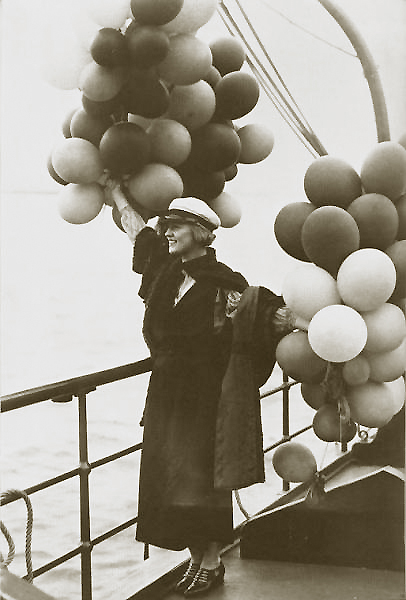
This is a picture of Marion Davies on the deck of the Hearst yacht, Oneida. She is welcoming Thomas Ince aboard for his belated birthday party. I find this a most wonderfully joyous and yet a very sad picture. At that point Miss Davies and the rest of the guests on board were unaware of the tragedy that was to come. She appears to be so excited to see Thomas Ince. She is so very fashionably dressed, topped off with her yachting cap and is holding a double armload of colored helium balloons. As she was one of the world’s favorite and most famous actresses, being greeted like this must have thrilled Thomas Ince. However, the party was short lived. To everyone’s disbelief, Ince had a heart attack that evening on the Oneida and three days later he died at his home in Beverly Hills. His death was mourned by all of Hollywood. |
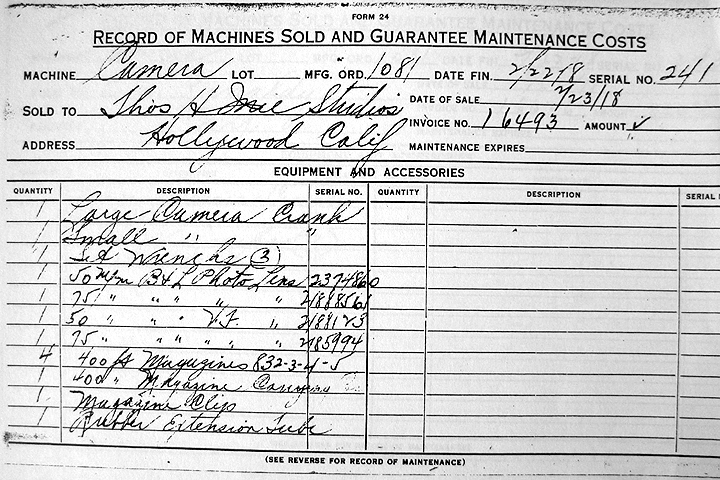
This is a copy of the original Bell and Howell factory sales record card. D. W. Griffith was very famous, Thomas Ince was very important. Now we go on to the camera. |
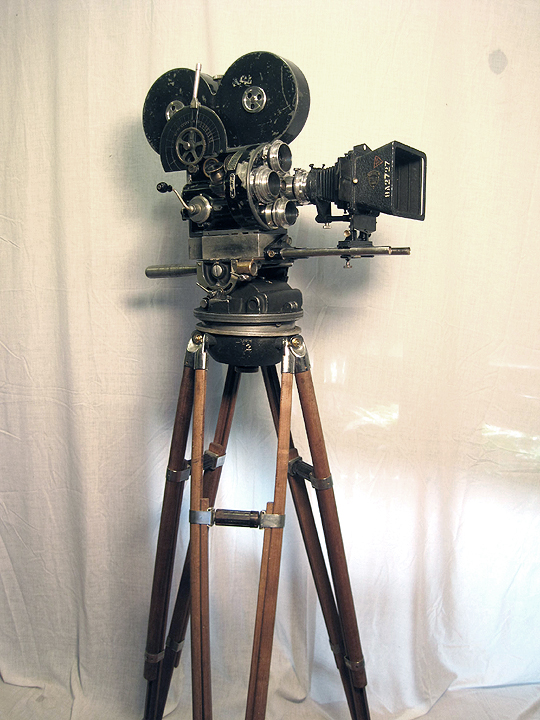
Bell & Howell cameras are still considered the steadiest camera ever made. 2709’s were called “rock steady” for a reason. This is because the camera had fixed pilot pins. The pilot pins are the guide pins onto which the film is pushed. They keep the film in exactly the same place frame after frame. All other cameras had moving pilot pins that were withdrawn from the film so the pull down claws could move the film to the next frame. The mechanism could deteriorate, causing the pins to lose tolerance. In the Bell and Howell movement the film was pulled off the fixed pins, pulled down one frame and then pressed back onto the pins. It was often called the “clapper” movement because of the noise it made. Bell and Howell called it the Unit I shuttle. |
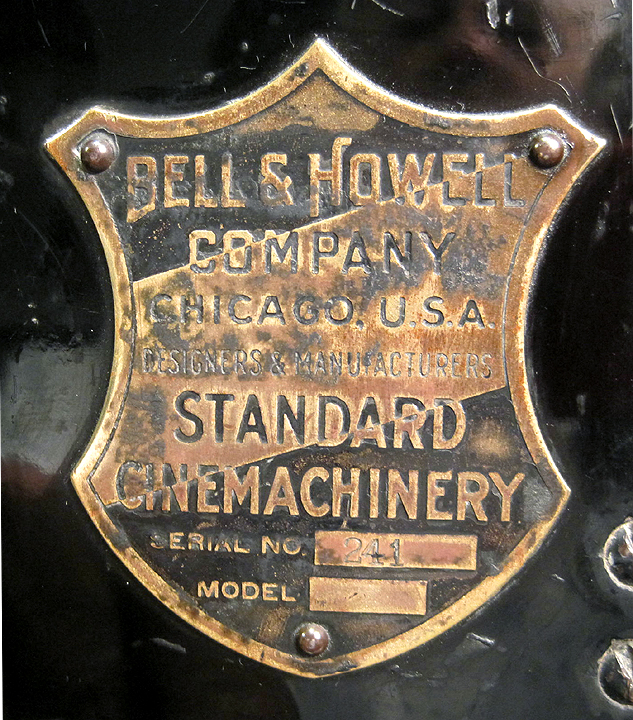
This is the factory badge on the camera left side door with the serial number stamped in it. I can’t begin to speculate on all the movies this camera has shot. I can’t imagine what places it has been to or what famous and important people have worked with it. Just knowing that this camera worked the Ince Studios lot on a daily basis is thrilling. |
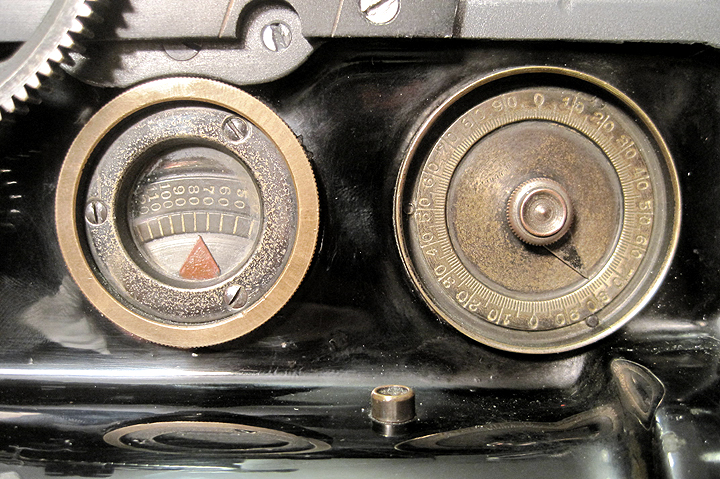
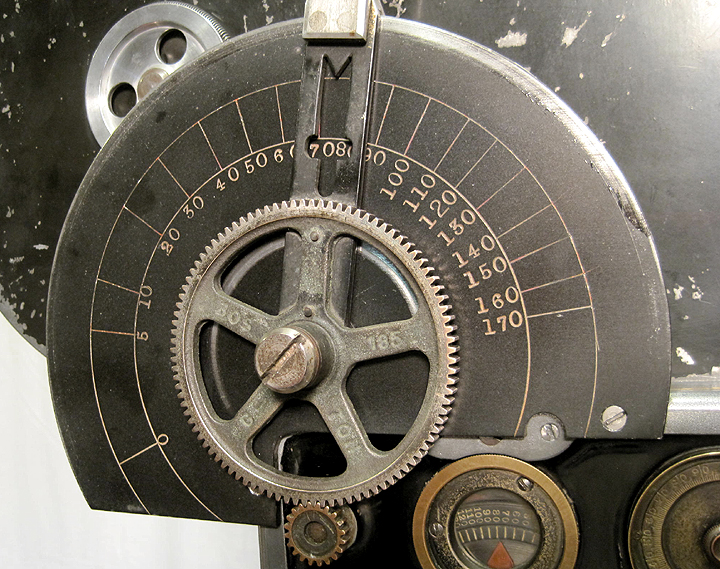
The ability to change the shutter angle on a 2709 was a wonderful tool. The only problem was that the operator had to read the tiny numbers inside the small window on the camera right side. This large shutter wheel adaptation is one of the best and most practical after market changes ever made to a 2709. |
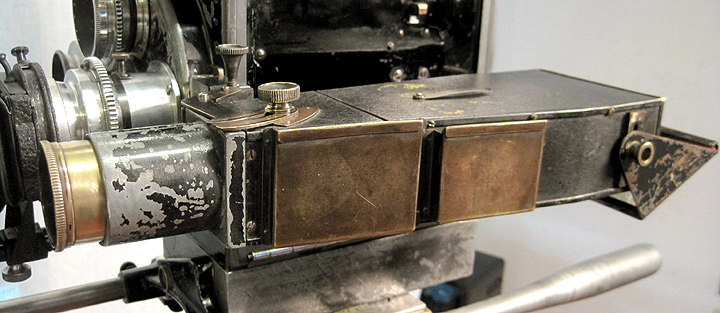
This sidefinder is so very rare I can hardly contain my excitement over it. The factory Bell and Howell side finders were very awkward to use. They stuck out past the side door that had to be opened in order to load film. Every time the operator opened the door he had to actually take the viewing tube off the sidefinder, causing real delays. Also, the image on a stock finder was about the size of a 35mm frame of film and was upside-down. It wasn’t possible to look through the factory sidefinder while shooting, as the crank was on the other side of the camera. Hence this after market finder was a wonderful change. For more on this finder see the video at the bottoom of the page. |
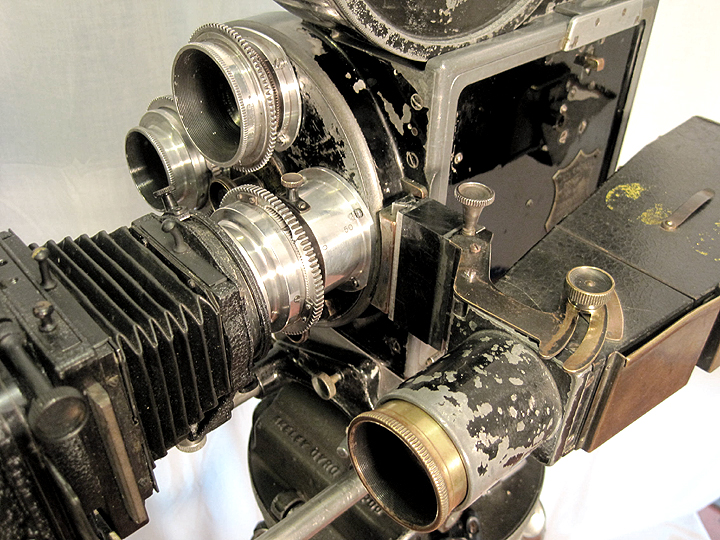
There are very few of these cameras still in existence. As with all cameras that had any career length, this camera was modified to do it's job better and better as time went on. Fortunately this camera managed to escape the modification that was applied to so many 2709's, many of which had the whole front milled off flat and had what was called a single lens "hard front" put on to replace the four lens turret. |
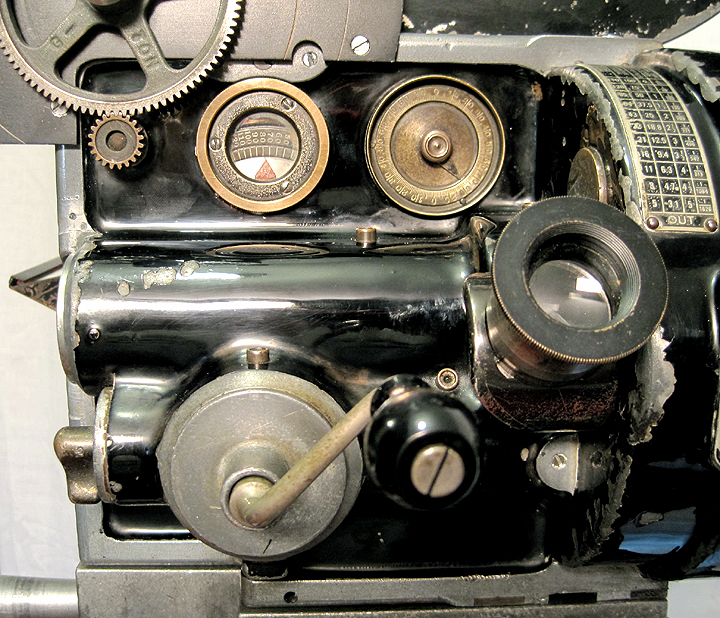
The camera body still has its original factory high gloss black baked on enamel finish. |
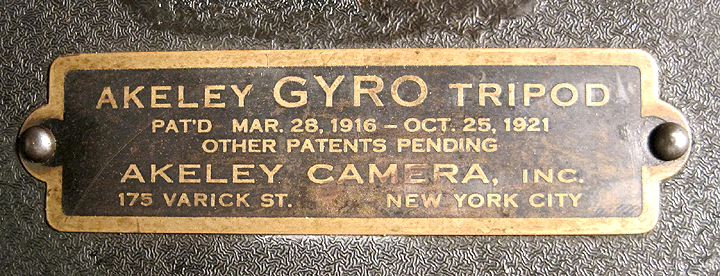
The Akeley GYRO head was a very important tool for people who wanted to shoot action movies. With a regular gear head, a cameraman needed three hands in order to pan and tilt and crank the camera. Carl Akeley developed the Akeley GYRO head for use in filming animals on the move, in Africa. It was quickly recognized as a head that could be used for shooting horse chases, car chases, stampedes and other scenes where the camera needed to follow high-speed action accurately. Watch the video and listen to the gears whine. Because of the noise they produced this head and the Bell and Howell 2709 were almost instantly made obsolete with the development of sound in the movie industry. |
From here lets take a photo tour around the camera and then watch the video.
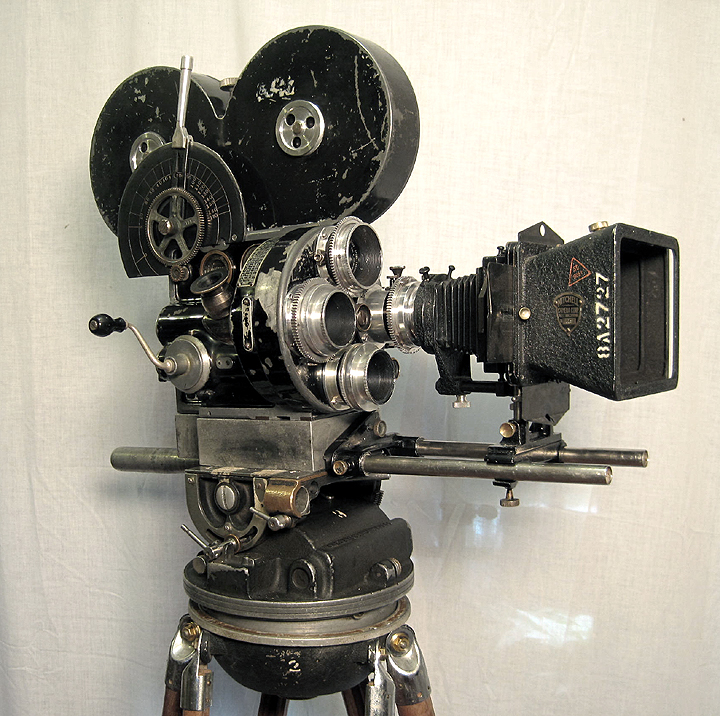
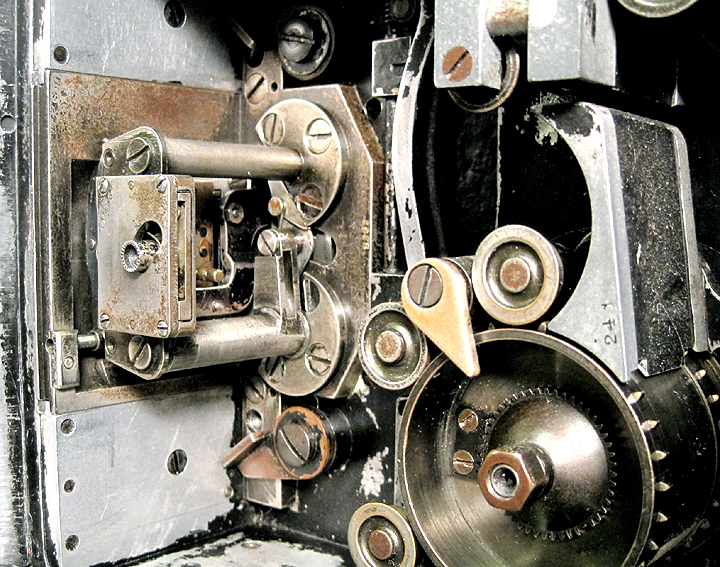
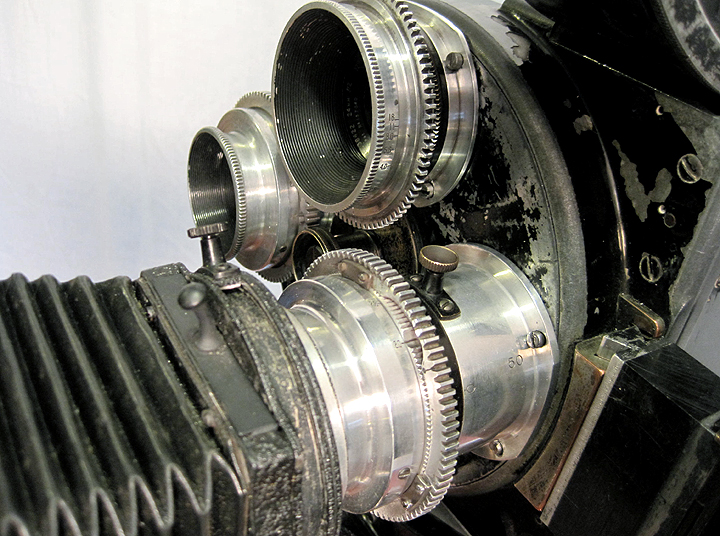

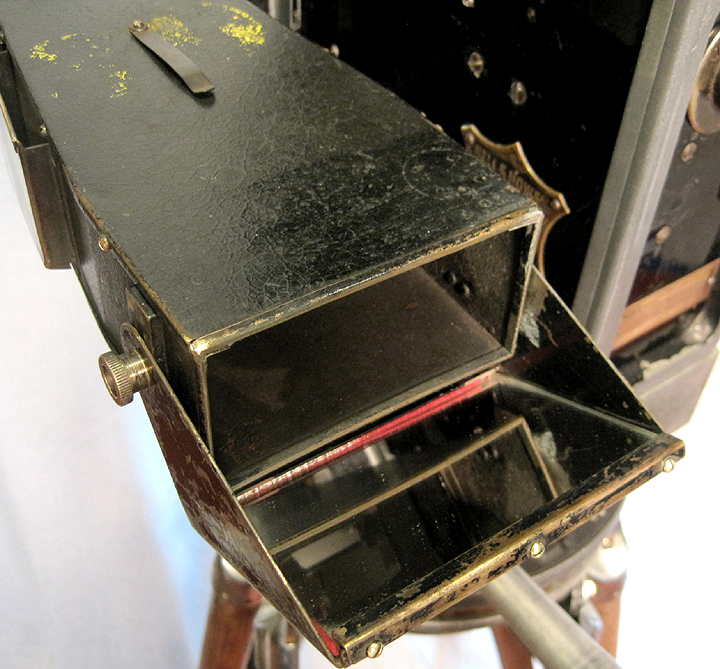
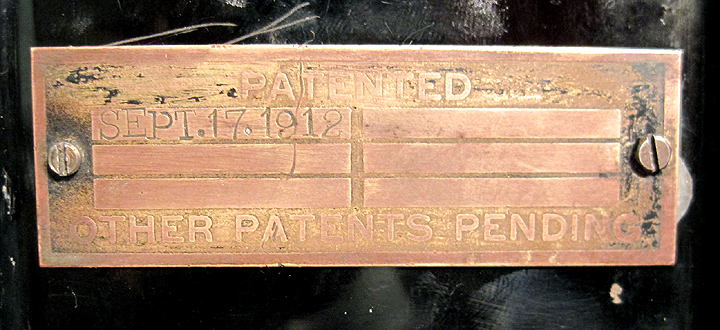
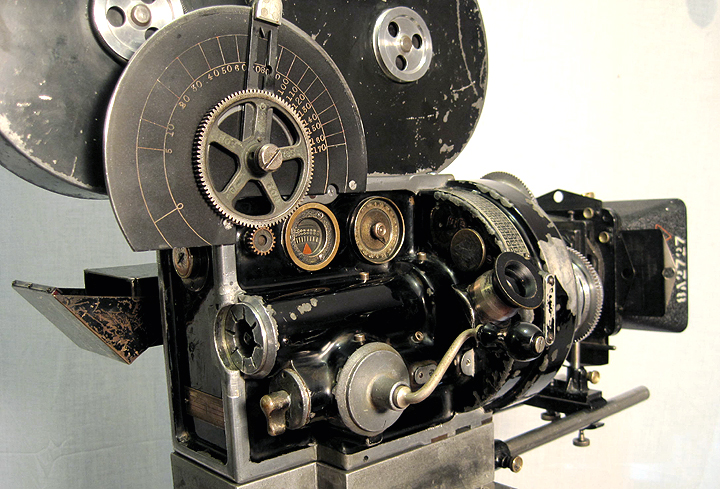
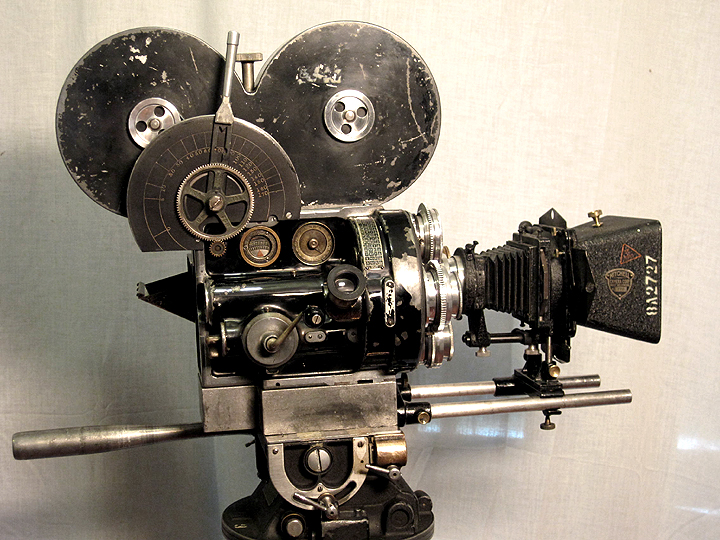

The Video: